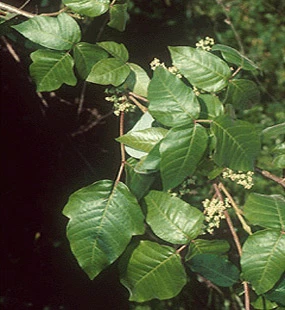
NPS PHOTO Poison Ivy (Toxicodendron radicans) This plant provides cover and food for a wide variety of animals, and its horizontal rhizome root system stabilizes critical sand dunes. The plant’s three leaflet compound leaf structure varies from bright green to reddish in spring and fall, with white berries in the summer and fall. Poison ivy can grow as a low, trailside plant, as an aggressive tree-climbing vine, as a shrub, and even as a small tree. All parts of the plant contain the oil urushiol, which causes a skin rash. |
Last updated: February 3, 2025
